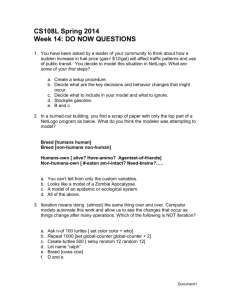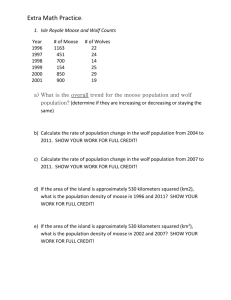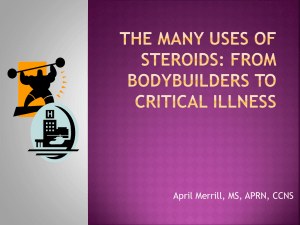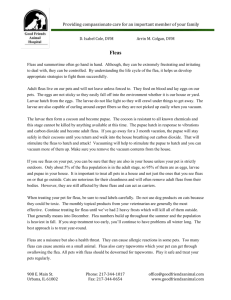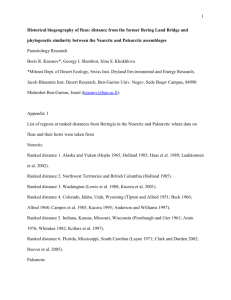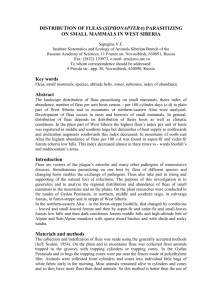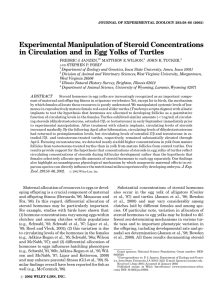Draw a picture of what the particles of each state of matter would
advertisement
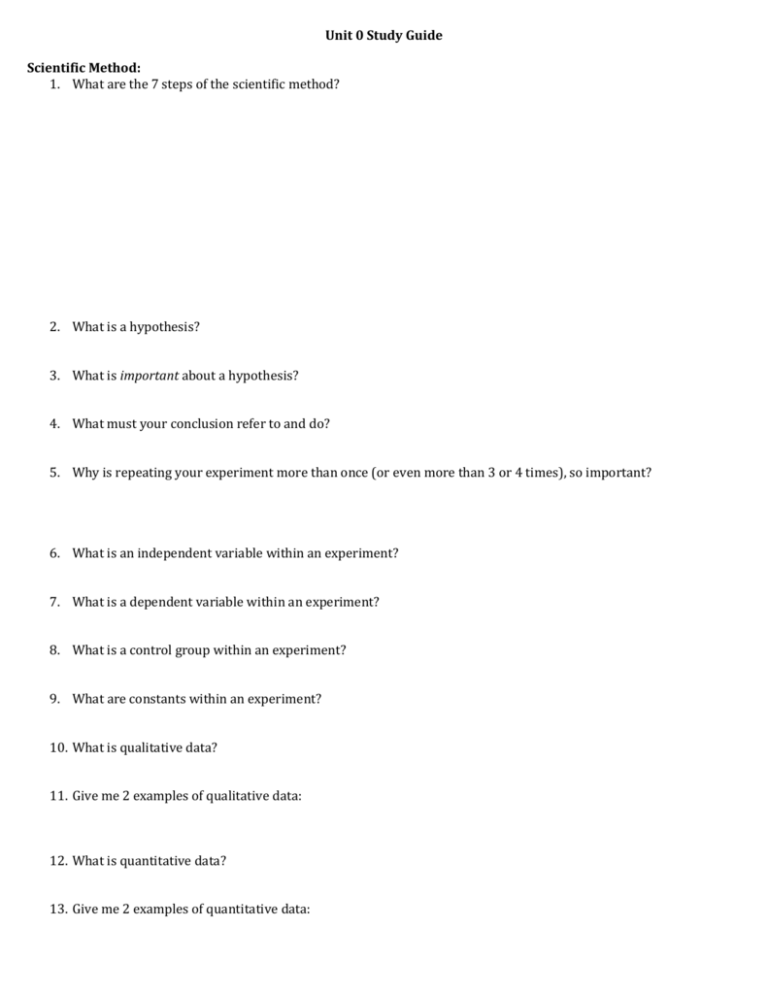
Unit 0 Study Guide Scientific Method: 1. What are the 7 steps of the scientific method? 2. What is a hypothesis? 3. What is important about a hypothesis? 4. What must your conclusion refer to and do? 5. Why is repeating your experiment more than once (or even more than 3 or 4 times), so important? 6. What is an independent variable within an experiment? 7. What is a dependent variable within an experiment? 8. What is a control group within an experiment? 9. What are constants within an experiment? 10. What is qualitative data? 11. Give me 2 examples of qualitative data: 12. What is quantitative data? 13. Give me 2 examples of quantitative data: Units! 1. What are the SI Units for each of the following? a. Mass = ________________ b. Length = ________________ c. Volume = ________________ d. Time = ________________ 2. Which of these SI Units is the only one that involves a prefix? 3. What are the order of the 7 prefixes you are required to know in order from largest to smallest? _______________ _______________ _______________ Conversions 1. 8.9 decigrams = __________ centigrams _______________ _______________ _______________ _______________ 5. 7.1 centiliters = __________ decameters 2. 103.29 millileters = _________ decaliters 6. 22 hectometers = _________ centimeters 3. 6.2 kilometers = ___________ hectometers 7. 1.3 grams = ___________ centigrams 4. 30.28 decameters = __________ decimeters 8. 88.21 decimeters = __________ meters Define: Precision: Accuracy: HONORS ONLY (FOR ONLY THE SCIENTIFIC NOTATION SECTION): If I give you the scientific notation, you give me the standard number. If I give you the standard number, you give me the scientific notation. 1. 560.2 ____________________ 2. 2.3 x 106 ____________________ 3. 5.5 x 10-2 ____________________ 4. 227,000 ____________________ 5. 0.00091 ____________________ 6. 9.3 x 103 ____________________ 7. 3.35 x 10-2 ____________________ Scientific Method Examples: An experiment was designed to investigate the effect of caffeine on the heartbeat of water fleas. Two populations of water fleas were grown. Both populations had water with the same mineral content, were supplied with identical amounts of food, received the same amount of light, and had their temperature maintained at 20ºC. Every two hours, water fleas from both populations were selected and their heartbeats were monitored. The fleas of population one had caffeine administered five minutes before their heartbeat was checked. The fleas of population two were given nothing. After the experiment, fleas that has been administered caffeine has a heartbeat rate of 58 beats per minutes on average, while the fleas that had not been administered caffeine has a heartbeat rate of 46 beats per minutes on average. 1. What part of the experiment was caffeine? 2. What part of the experiment was the water temperature? 3. What part of the experiment was the heart beat? 4. What part of the experiment was the control group? 5. What part of the experiment was the experimental group? An experiment was designed to investigate the effect of steroid use on the speed of land turtles. Two populations, with 10 turtles in each population, were selected. Both populations had food with the same nutritional content, the same access to water, and exposure to the same temperature, weather, and sunlight conditions. The turtles were kept in these populations for a month before the test. Population 1 had a topical steroid cream applied to their shells daily at 9am throughout that month, while population 2 went steroid free for that month period. After a month, the 20 turtles were raced on a 20 meter track and times were taken and speed was calculated. Average speeds of the 10 turtles without the steroid cream were 0.27m/s, whereas the 10 turtles that were administered steroid cream were 0.26m/s. 1. What part of the experiment was the 1 month prior to the race? 2. What part of the experiment was the speed of the turtles? 3. What part of the experiment was the topical steroid cream? 4. What part of the experiment was the control group? 5. What part of the experiment was the experimental group? 6. What would your conclusion about this experiment be?



